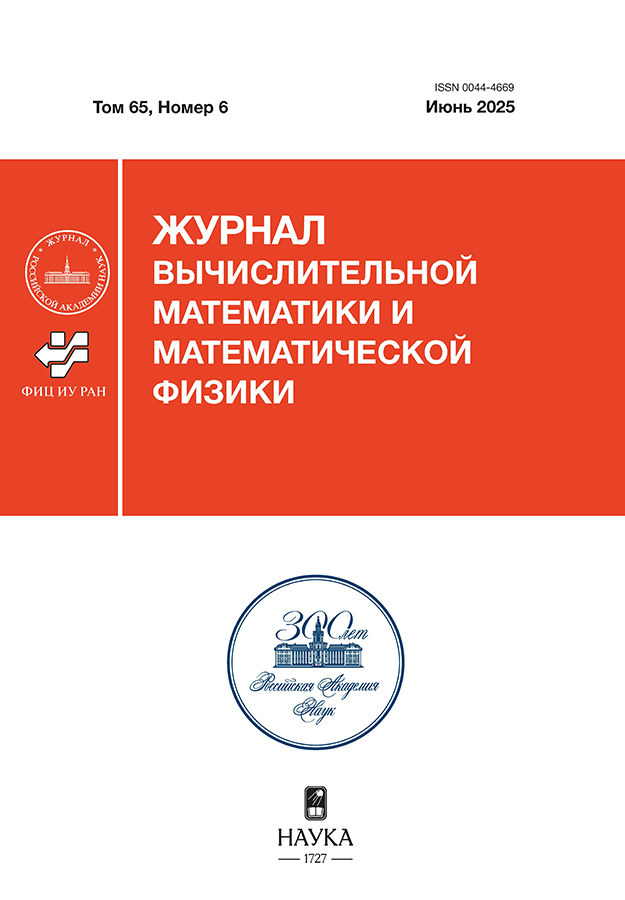SOLVING PROBLEMS OF KINETIC INTERACTION OF FAST GROUPS OF PARTICLES USING ANALYTICAL AND NUMERICAL METHODS
- Authors: Aristov V.V1, Voronich I.V1
-
Affiliations:
- Federal Research Center Computer Science and Control, RAS
- Issue: Vol 64, No 9 (2024)
- Pages: 1699-1707
- Section: Mathematical physics
- URL: https://freezetech.ru/0044-4669/article/view/665200
- DOI: https://doi.org/10.31857/S0044466924090102
- EDN: https://elibrary.ru/WJRVWI
- ID: 665200
Cite item
Abstract
A brief overview of the problem statements related to high-speed beams is given, with an emphasis on the use of analytical solutions, and the results of numerical solution of some problems of this class are described. Within the framework of kinetic theory, the processes of interaction of groups of particles (molecules) are considered on the basis of the analytical method, assuming a high correlation of particle velocities (delta function as the distribution density). The problems of the interaction of beams with and without the elimination of particles are studied numerically using the method of direct statistical modeling. For the problem with the elimination of particles (intersection and interaction of thin beams), a good agreement with the analytical solution was obtained. For the problem without the elimination of particles (collision of flows), a numerical solution of the type of traveling shock wave of extreme compression formed when the flow collides with the wall is obtained. The role of shock transformants at the initial stage of the process is shown. The problem of beam penetration into a stationary gas up to the stage of plume formation is considered, and the similarity of its initial stage with the problem of thin beams is noted. The fruitfulness of using analytical methods at the stage of primary analysis of the problem and verification of numerical solutions is emphasized.
About the authors
V. V Aristov
Federal Research Center Computer Science and Control, RAS
Email: aristovvl@yandex.ru
Moscow, Russia
I. V Voronich
Federal Research Center Computer Science and Control, RAS
Email: i.voronich@frccsc.ru
Moscow, Russia
References
- Аристов В.В. Метод переменных сеток в скоростном пространстве в задаче о сильной ударной волне // Ж. вычисл. матем. и матем. физ. 1977. T. 17. № 4. С. 261—267.
- Brull S., Mieussens L. Local discrete velocity grids for deterministic rarefied flow simulations // J. of Comput. Phys. 2014. V. 266. P. 22-46.
- Arslanbekov R.R., Kolobov V.I., Frolova A.A. Kinetic Solvers with Adaptive Mesh in Phase Space // Phys. Rev. E. 2013. V. 88. 063301.
- Xiao T., Liu C., Xu K., Cai Q. A velocity-space adaptive unified gas kinetic scheme for continuum and rarefied flows // J. of Comput. Phys.2020. V.415. 109535.
- Аристов В.В., Шахов Е.М. Задача о сильном взрыве в разреженном газе // Ж. вычисл. матем. и матем. физ. 1979. T. 19. № 5. C. 1276-1287.
- Аристов В.В., Шахов Е.М. Течение разреженного газа, вызванное сильным точечным выбросом конечной массы // Ж. вычисл. матем. и матем. физ. 1985. Т. 25. № 7. С. 1066-1077.
- Aristov V.V., Shakhov E.M. Scattering of impulsive molecular beam in a raref1ed gas // Ргос. of 15th Int. Symp. оп Rarefied Gas Dyn. Ed. B.G. Teubner. 1986. V. 1. Р. 266-275.
- Аристов В.В., Шахов Е.М. Нелинейное рассеяние импульсного молекулярного пучка в разреженном газе // Ж. вычисл. матем. и матем. физ. 1987. Т. 27. № 2. С.159-164.
- Мюррей Д. Математическая биология. Т. II / Ред. Г.Ю. Ризниченко. М.: - Ижевск, 2011.
- История и Математика: Проблемы периодизации исторических макропроцессов. М.: КомКнига, 2006.
- Special Issue: Statistical Mechanics and Social Sciences I // J. Stat. Phys. 2013. V. 151. N 1-2. Special Issue: Statistical Mechanics and Social Sciences II // J. Stat. Phys. 2013. V. 151. N 3-4.
- Prigogine I., Herman R. Kinetic Theory of Vehicular Traffic. New York: American Elsevier, 1971.
- Колмогоров А.Н., Петровский И.Г., Пискунов Н.С. Исследование уравнения диффузии, соединенной с возрастанием количества вещества и его применение к одной биологической проблеме // Бюллетень МГУ. Сер. А. Матем. и механ. 1937. Т. 1. С. 1-25.
- Fischer R. A. The wave of advance of advantageous genes // Ann. Eugenics. 1937. V. 7. P. 355-369.
- Васильев В.А., Романовский Ю.М., Яхно В.Г. Автоволновые процессы. М.: Наука, 1987.
- Елькин Ю.Е. Автоволновые процессы // Матем. биология и биоинформатика. 2006. Т. 1. № 1. С. 27-40.
- Aristov V.V., Ilyin O.V. Kinetic Models for Historical Processes of Fast Invasion and Aggression // Phys. Rev. E. 2015. V. 91. 04286.
- Blitzkrieg basics // Scientific American. 2015. N 6. P. 22.
- Acioli P.H. Diffusion as a first model of spread of viral infection // Am. J. Phys. 2020. V. 88(8). Р. 600-604.
- Aristov V.V., Stroganov A.V., Yastrebov A.D. Simulation of Spatial Spread of the COVID-19 Pandemic on the Basis of the Kinetic-Advection Model // Physics. 2021. V. 3. P. 85-102.
- Аристов В.В., Строганов А.В., Ястребов А.Д. Применение модели кинетического типа для изучения пространственного распространения COVID21 // Докл. АН. Физика. Техн. науки. 2021. Т. 498. С. 27-32.
- Седов Л.И. Распространение сильных взрывных волн // Прикл. матем.и механ. 1946. Т 10. Вып. 2. С. 241— 250.
- Taylor G. The formation of blast wave by a very intense explosion // Rept RC—210, 27 June 1941. Civil Defence Research Committee, 1941.
- von Neumann J. The point source solution // Bethe H.A., Fuchs K., Hirschfelder J.O. et al. Blast wave. Los-Alamos Scientific Laboratory Rept LA-2000. 1958. P. 27—55.
- Коробейников В.П. Задачи точечного взрыва. М.: Наука, 1988.
- Баранцев Р.Г. Об ударных трансформантах кинетического уравнения аэродинамики разреженных газов // Аэродинамика разреженных газов. Л.: Изд-во ЛГУ., 1963. Вып. 1. С. 80—91.
- Аристов В.В., Воронич И.В., Забелок С.А. Исследование неклассического переноса с применением численных методов решения уравнения Больцмана //Ж.вычисл.матем. и матем. физ. 2023. №12. С. 2025—2034.
Supplementary files











